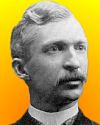
On 10 Sep 1857, James Keeler was born, the American astronomer who used spectroscopic observations to confirm that the rings of Saturn were not solid, but composed of meteoric particles, as predicted in theory by Maxwell. In his relatively short life (he died at age 42) he established a reputation for the accuracy of his measurements of spectra of stars and planets. He discovered and measured the motion of nebulae.
In the biography for James Keeler, astronomer, in The National Cyclopedia of American Biography you can learn that, like some other astronomers, he gained the interest as a lad, and made his own telescope with which he viewed Saturn. He went on expeditions, worked at several observatories, and wrote extensively for technical publications.

On 10 Sep 1892, Arthur Holly Compton was born, an American physicist who was awarded the 1927 Nobel Prize for his discovery and explanation of the Compton Effect. During World War II, he helped develop the atomic bomb. Today's book pick is: The cosmos of Arthur Holly Compton, by Arthur Holly Compton, is not about astronomy, but about Compton's personal cosmos. It is a volume full of Compton's spirit in his collected essays edited by Marjorie Johnston, that will delight anyone interested in the impact of science on society, its history and philosophy. The book beings with a 50-page informal autobiography. It continues on an intellectual adventure of scientific pursuits, as seen in the work of Compton and other scientists.
It is available from Amazon, typically about Used from $9.95. (As of earlier time of writing - subject to change.)
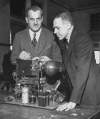 | Yet is it possible in terms of the motion of atoms to explain how men can invent an electric motor, or design and build a great cathedral? If such achievements represent anything more than the requirements of physical law, it means that science must investigate the additional controlling factors, whatever they may be, in order that the world of nature may be adequately understood. For a science which describes only the motions of inanimate things but fails to include the actions of living organisms cannot claim universality. |
 | Life is a copiously branching bush, continually pruned by the grim reaper of extinction, not a ladder of predictable progress. |
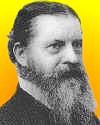 | Every work of science great enough to be well remembered for a few generations affords some exemplification of the defective state of the art of reasoning of the time when it was written; and each chief step in science has been a lesson in logic. |
| Before you look at today's web page, see if you can answer some of these questions about the events that happened on this day. Some of the names are very familiar. Others will likely stump you. Tickle your curiosity with these questions, then check your answers on today's web page. | |
| Births | |
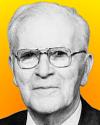 | Waldo Semon, born 10 Sep 1898, was an American chemical engineer who invented a plastic now produced in larger quantities than any other plastic except polyethylene. In 1926's, he discovered how to convert it from a hard, unworkable substance to a pliable one. It is now used in hundreds of products such as floor tile, garden hose, imitation leather, shower curtains, and coatings. What is this popular plastic? |
 | Arthur Holly Compton, born 10 Sep 1892, was an American physicist, engineer and a joint winner of the Nobel Prize for Physics (1927) for his discovery and explanation of what is known as the Compton effect. What is the Compton effect? |
| Deaths | |
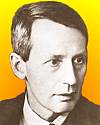 | Sir George Thomson (1892-1975) was an English physicist who was the joint recipient, (with American Clifton J. Division), of the Nobel Prize for Physics in 1937 for demonstrating that electrons exhibit a certain property of waves. What wavelike electron phenomenon did he demonstrate? |
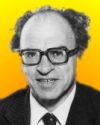 | Sir Hermann Bondi (1919-2005) was an Austrian-born British mathematician and cosmologist who, with Fred Hoyle and Thomas Gold, formulated a theory to explain the universe that was different from the “Big Bang.” What was the theory of the universe put forward by Bondi, Hoyle and Gold? |
| Events | |
 | On 12 Sep 1912, Carl Fisher brought together a group of prominent men from the auto industry for a dinner in Indianapolis, at which he pitched his idea of a transcontinental highway. It would be a surfaced road to join the east coast of the U.S. to the west coast. It became an all-weather road for the use of the automobiles those leaders were then manufacturing. What was this transcontinental road named? |
 | On 10 Sep of a certain year, Alec Jeffreys realized the possibility of DNA fingerprinting for a person's unique identification. That idea was an accidental outcome of research on genetic markers for inherited illness. Two years later, the first use of DNA profiling in criminology proved innocence. In which decade was DNA fingerprinting introduced? |
Fast answers for the previous newsletter for September 9: the rate of flow of electromagnetic energy • Luigi Galvini • starch • X-rays • moth • Radio Corporation of America (RCA).
 If you enjoy this newsletter, the website, or wish to offer encouragement or ideas, please send feedback by using your mail reader Reply button.
If you enjoy this newsletter, the website, or wish to offer encouragement or ideas, please send feedback by using your mail reader Reply button. Your click on a Facebook, StumbleUpon, or other social button on the site webpages is also a welcome sign of appreciation. Thank you for using them.
© This newsletter is copyright 2020 by todayinsci.com. Please respect the Webmaster's wishes and do not put copies online of the Newsletter — or any Today in Science History webpage. (If you already have done so, please remove them. Thank you.) Offline use in education is encouraged such as a printout on a bulletin board, or projected for classroom viewing. Online, descriptive links to our pages are welcomed, as these will provide a reader with the most recent revisions, additions and/or corrections of a webpage. For any other copyright questions, please contact the Webmaster by using your mail reader Reply button.
--
If you do not want to receive any more newsletters, Unsubscribe
To update your preferences and to unsubscribe visit this link
Executive Real Estate Business Class
-
"It was like a man with wings. It wasn't like anything you'd see on TV or in a monster movie." ...
About the publisher
Search This Blog
Blog Archive
-
▼
2020
(1542)
-
▼
September
(173)
- SCIENCE: Just how big is Everest?
- The Latest News from History News Network
- On This Day for September 30 - Munich Agreement si...
- We are called to return to our foundational values...
- Newsletter for Wednesday 30 September.
- They Killed His Wife And Left Him For Dead – Then ...
- TRAVEL: Telling new truths about America’s histori...
- Make learning fun with Nat Geo Kids magazine! Subs...
- On This Day for September 29 - British mandate in ...
- Newsletter for Tuesday 29 September.
- Special Edition: Dinosaurs come to life like never...
- September 29: On This Day in History
- HISTORY: America's most endangered historic sites
- New This Week on History News Network
- On This Day for September 28 - California “discove...
- Newsletter for Monday 28 September.
- September 28: On This Day in History
- FAMILY: What do I tell my kids about wildfires and...
- On This Day for September 27 - Norman Conquest beg...
- Newsletter for Sunday 27 September.
- September 27: The Rosetta Stone, E=mc² and Fear as...
- The Compass: Indonesia
- On This Day for September 26 - First televised U.S...
- Newsletter for Saturday 26 September.
- September 26: Frances Drake's Circumnavigation, th...
- CORONAVIRUS UPDATE: Is this the end of the office?
- PHOTOGRAPHY: They feed us. Now we see them.
- The assassination of Lord Mountbatten | Enola Holm...
- 39,500-Year-Old Cave Bear Discovered Perfectly Pre...
- On This Day for September 25 - Pacific Ocean sight...
- The Roundup Top Ten for September 25, 2020
- Newsletter for Friday 25 September.
- September 25: Battle of Stamford Bridge, Remote Co...
- ANIMALS: These mighty elephants find peace
- On This Day for September 24 - Federal troops sent...
- Newsletter for Thursday 24 September.
- Global cartels taking control of the world + HPA B...
- September 24: Decline of the Byzantine Empire, Ope...
- YOUR WEEKLY ESCAPE: America's oldest mystery
- SCIENCE: How to cope with a big death toll
- The Latest News from History News Network
- On This Day for September 23 - Neptune observed, J...
- Newsletter for Wednesday 23 September.
- September 23: Nintendo, the Start of Data Processi...
- TRAVEL: How will America’s state parks survive?
- Matching gift opportunity for Sumatran rhinos
- On This Day for September 22 - Solidarity formed, ...
- Newsletter for Tuesday 22 September.
- September 22: Salem Witch Trials, Iraq's Invasion ...
- HISTORY: Who can replace RBG?
- Feed their curiosity! Get Nat Geo Kids magazine fo...
- New This Week on History News Network
- On This Day for September 21 - Joseph Smith's visi...
- Newsletter for Monday 21 September.
- September 21: France, China and a Sheep Shearing R...
- FAMILY: Don’t tell your kids outdated stuff about ...
- On This Day for September 20 - Rome incorporated i...
- Pro-life is not Politics + Vickie Travis's message...
- Newsletter for Sunday 20 September.
- September 20: Attila the Hun, Magellan's Circumnav...
- The Compass: Chile
- Matching gift opportunity for Sumatran rhinos
- On This Day for September 19 - George Washington's...
- Newsletter for Saturday 19 September.
- CORONAVIRUS UPDATE: Young people are spreading the...
- September 19: 1st Country to Grant Women the Right...
- PHOTOGRAPHY: How to make dinos look new (CORRECTED)
- Quick Note: How to Save Videos by Downloading
- PHOTOGRAPHY: How to make dinos look new
- The Mayflower | Medieval spiders | Ancient Egypt f...
- When She Found Out Her Boyfriend Was A Serial Kill...
- The Roundup Top Ten from History News Network
- On This Day for September 18 - Mukden seized by Ja...
- Newsletter for Friday 18 September.
- "Truth Crushes Evil" + We're Winding down + What ...
- YOUR WEEKLY ESCAPE: The country that doesn't exist
- September 18: Great Fire of Moscow, the CIA and El...
- ANIMALS: How U.S. officials stopped the flying squ...
- Two New Podcasts From HISTORY
- Don't miss out: back to school savings for learner...
- On This Day for September 17 - Camp David Accords ...
- Newsletter for Thursday 17 September.
- September 17: Bloodiest Day in the American Civil ...
- SCIENCE: He found part of a one-of-a-kind dinosaur
- SPECIAL REPORT: How the West is primed to burn
- The Latest News from History News Network
- On This Day for September 16 - Mayflower's departu...
- Newsletter for Wednesday 16 September.
- September 16: French Abolish Slavery, Malaysia For...
- TRAVEL: Will slowing down help you get stronger?
- Special Report: How do we end this pandemic?
- On This Day for September 15 - Central Americans g...
- Newsletter for Tuesday 15 September.
- September 15: Darwin Reaches the Galapagos, Penici...
- HISTORY: How the U.S. battled catastrophic wildfir...
- BREAKING NEWS: Possible evidence of life found on ...
- Discover Remarkable Leaders With Nat Geo History M...
- On This Day for September 14 - Mexico City capture...
- New This Week on History News Network
- Newsletter for Monday 14 September.
-
▼
September
(173)
-
Blogroll
-
About
HistoryFact










0 comments:
Post a Comment